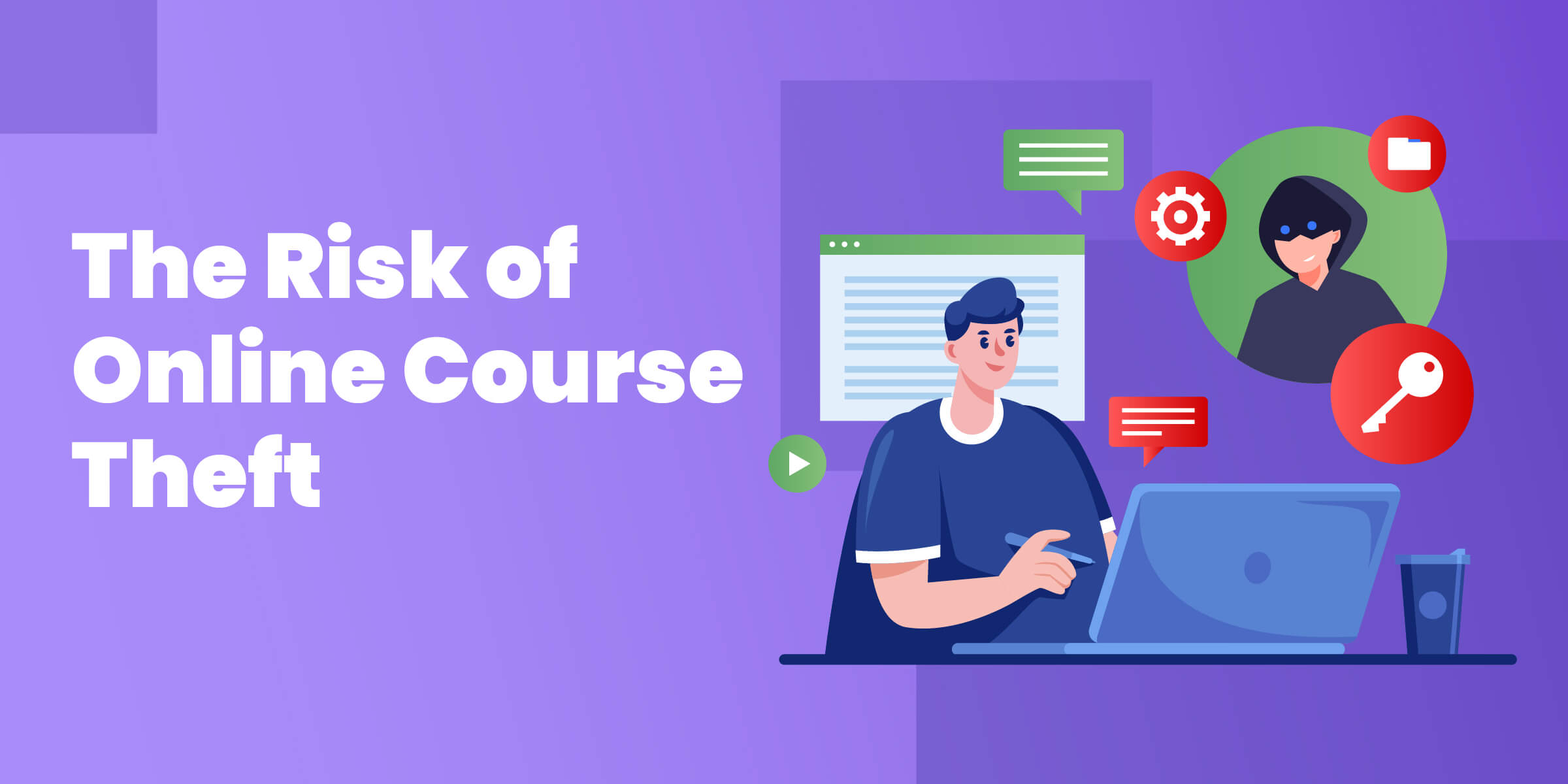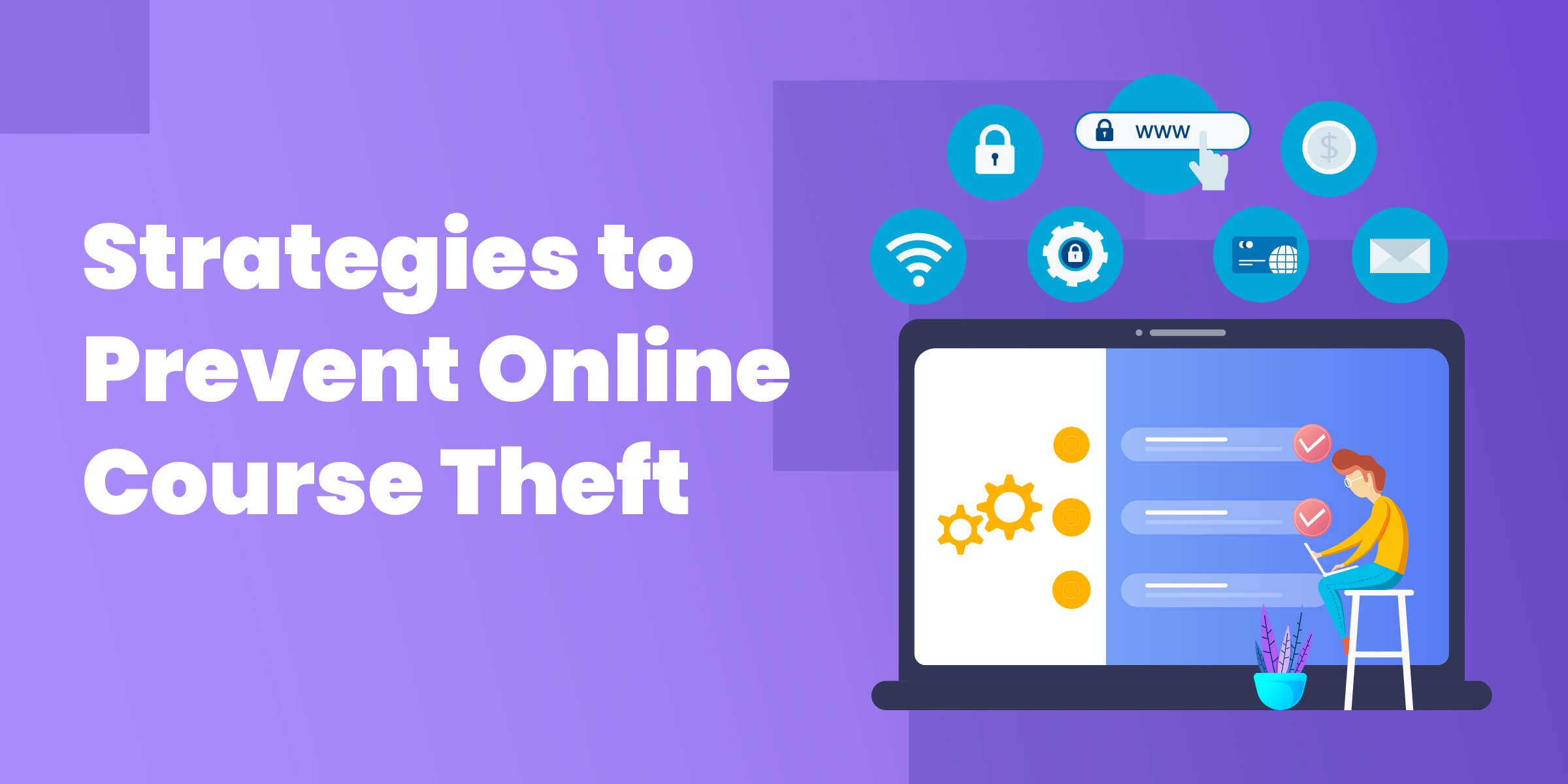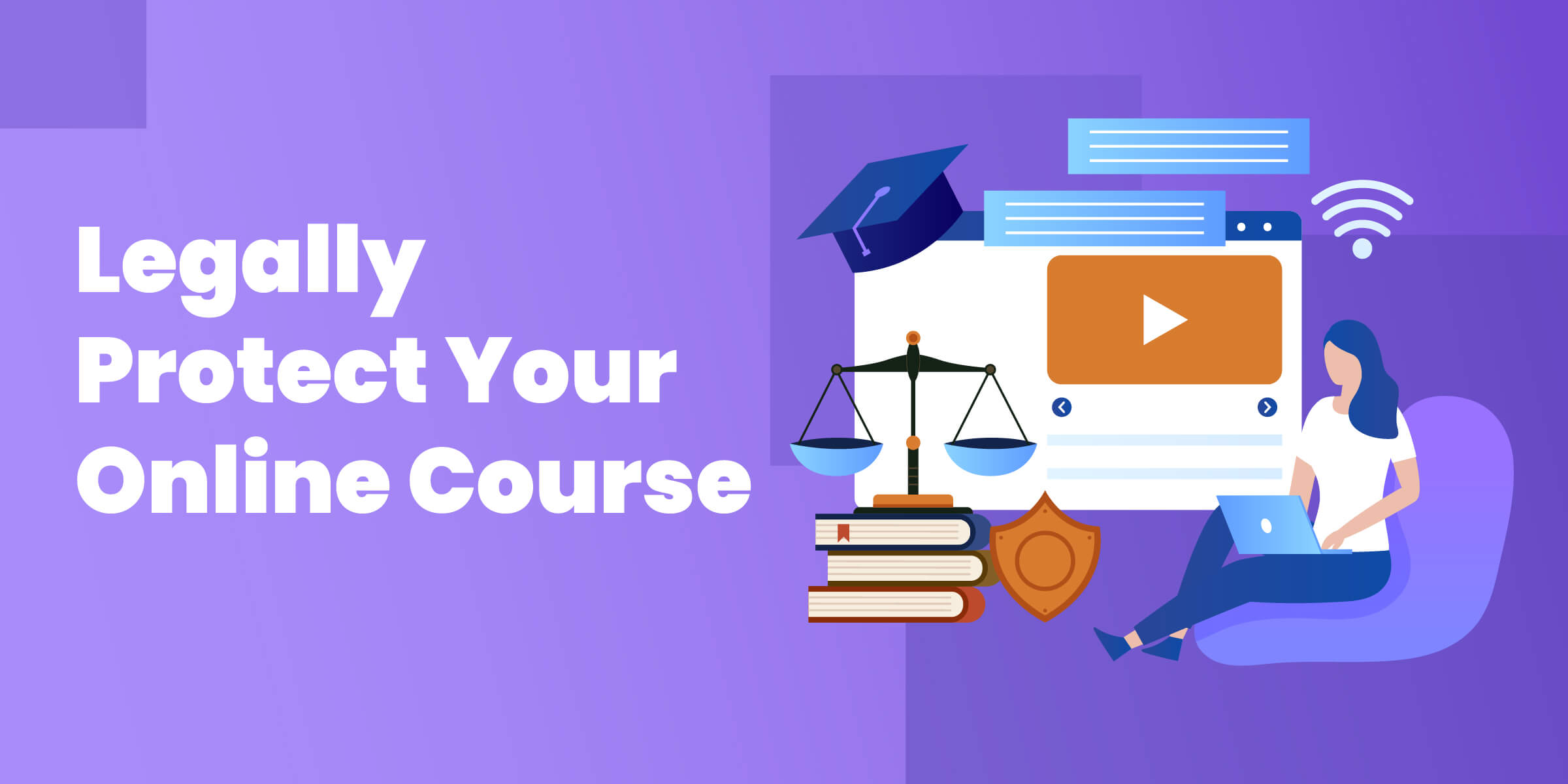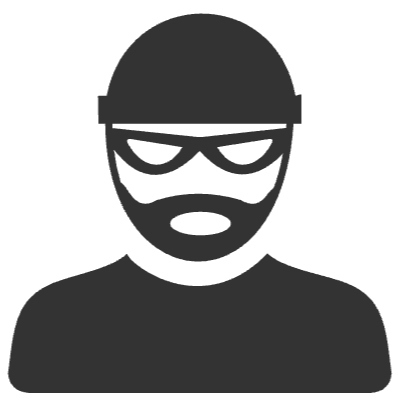Creating an online course is an exciting endeavor, but it also comes with its fair share of challenges. One of which is the risk of digital piracy.
In this article, we will explore strategies to safeguard your online course from being stolen or pirated. So, grab your virtual pirate hat, and let's set sail on a journey to protect your valuable content!
We offer this website completely free to our visitors. To help pay the bills, we’ll often (but not always) set up affiliate relationships with the top providers after selecting our favorites. However, we do our best not to let this impact our choices. There are plenty of high-paying companies we’ve turned down because we didn’t like their product.
An added benefit of our relationships is that we always try to negotiate exclusive discounts for our visitors.
The Risk of Online Course Content Theft


Imagine pouring your heart and soul into creating an incredible online course, only to find out that someone has shamelessly copied and distributed it without your consent. The risk of online course theft is real, and it can have detrimental effects on your business and your ability to monetize your knowledge.
Pirated copies of your course can spread like wildfire across the internet, depriving you of potential revenue and diluting the value you offer to legitimate paying students. Even digital course videos can be copied and redistributed.
But fear not, matey! There are steps you can take to defend your online treasure.
Strategies to Prevent Online Course Theft


While nothing is fool-proof, there are ways to discourage online course theft. Using some or all of the below suggestions will reduce the risk of your course being pirated.
Require Two-Factor Authentication
Implementing two-factor authentication adds an extra layer of security to your course platform. By requiring students to verify their identity through a second means, such as a unique code sent to their mobile device, you can ensure that only authorized individuals gain access to your content.
Watermark Images and Videos
Applying visible watermarks to your course materials can act as a deterrent to piracy.
Watermarks can include your logo, the student's name, or a copyright notice. They make it more challenging for pirates to use your content without drawing attention to the fact that it has been stolen.
Do Not Allow Concurrent Logins
Restricting access to your course from multiple devices simultaneously can help prevent unauthorized sharing of account credentials. By limiting logins to a single device at a time, you reduce the likelihood of your course falling into the hands of pirates who distribute it to others.
Disable Right-Click
Disabling the right-click functionality on your course platform can prevent users from easily downloading or copying your course materials. Although this measure is not foolproof, it adds an extra hurdle for would-be content thieves.
Use a Trusted Platform for Course Distribution
Instead of relying on general-purpose platforms like YouTube, consider using a dedicated course platform that offers built-in security measures. These platforms often have technology in place to protect your course content and can provide a safer environment for both you and your students.
Legally Protect Your Online Course


Defending your online course goes beyond technological measures. It's essential to understand and leverage legal protections to safeguard your intellectual property.
Here are some steps you can take:
Copyright Your Content
Copyright provides legal protection for your original course materials. By registering your course with the appropriate copyright office, you establish a clear record of ownership and gain legal recourse if someone infringes upon your rights.
Apply for a Trademark
If you have developed a distinctive brand or logo associated with your course, consider applying for a trademark. This further strengthens your legal rights and can help prevent others from using your brand to promote their own courses.
Keep Evidence of Course Creation
Document the process of creating your course, including drafts, outlines, and timestamps. This evidence can be crucial in proving your ownership and the originality of your content in case of disputes or legal action.
Monitor Your Content for Piracy


Despite your best efforts, piracy may still occur. It's important to stay vigilant and actively monitor the internet for unauthorized copies of your course. Regularly search for infringing content using relevant keywords, and take immediate action to protect your rights.
Raise Disputes with Search Engines for Pirated Content
If you discover pirated copies of your course, you can raise disputes with search engines to have the unauthorized content removed from search results. By notifying search engines of the infringement, you can mitigate the visibility and accessibility of stolen versions.
Additionally, consider seeking assistance from specialized services that help combat course piracy. For example, DDIY offers a guide on how to handle stolen courses, including the takedown process and recommended services to aid in protecting your content.
Conclusion
Ahoy, online course creators!
By implementing these strategies and leveraging legal protections, you can safeguard your precious content from the clutches of digital pirates.
Remember, protecting your course not only preserves your hard work but also ensures that you can continue sharing your expertise with eager learners around the globe.
So, set your sails high, and keep your online course safe from plunder!
Eliminate Pirated Copies of Your Course
Our course was stolen! Someone else was making money off of our hard work. So, we found an anti-piracy expert to reclaim our lost rankings and stop unauthorized copies. Now you can work with him too.
- Avoid lost revenue when others monetize YOUR content
- Stop brand damage when your name is used on shady websites
- Prevent pirated copies from appearing above you in search results
Frequently Asked Questions
How can I prevent piracy of my online course?
To prevent piracy of your online course, you can employ strategies such as requiring two-factor authentication, watermarking images and videos, restricting concurrent logins, disabling right-clicking, and using trusted course platforms.
How do I protect online video content?
Protecting online video content can involve measures like watermarking, disabling downloading options, encrypting video files, and hosting videos on secure platforms with digital rights management (DRM) capabilities.
How do people steal content from an online course?
People can steal content from online courses through unauthorized access, unauthorized sharing of account credentials, downloading or copying course materials, and distributing the stolen content through various channels.
How can I secure my online course?
To secure your online course, you can implement measures such as strong user authentication, content watermarking, access restrictions, technological protections provided by trusted platforms, and legal protections through copyright and trademarks.
What should I do if someone pirates my online course?
If someone pirates your online course, you can take legal action, raise disputes with search engines to remove infringing content, and seek assistance from specialized services that aid in takedown efforts, such as those recommended by DDIY.




















